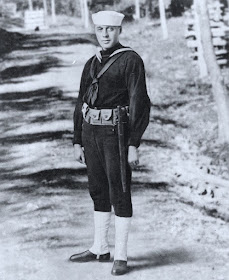Mike Lah, I believe it was, said that Tex Avery started doubting himself, wondering if the cartoons he was making at MGM were funny.
He had reason to. Some of them after he returned from a year of medical leave in the ‘50s weren’t all that funny compared with his work in the 1940s.
Tex hadn’t lost it, though. He went over to Walter Lantz and directed three cartoons I really enjoy, some even borrowing ideas he seems to have liked (the fourth, “Sh-h-h-h-h-h,” leaves a bit to be desired in the story department).
I think Tex got caught in a world of change. Cartoons had become a lot calmer. America had become a lot calmer. In the ‘50s, there was no Depression, and the World War was done. America started getting out of the noisy, busy cities and wanted to relax on a lawn chair in suburbia and fire up the barbecue. Cartoons reflected this. Almost all the studios got away from noisy, busy characters (ie. Screwy Squirrel) and calmed down what they put on the screen (re-issues an exception). Inertness came along just in time for TV animation, as lack of action on screen was the only way the cartoons could make any money.
Back to Tex Avery...
It could be the insecure Tex felt he needed to go back to the tried and true to get laughs, especially in an uncharacterly pathos-laden short. Avery regurgitated a bunch of old concepts in
The Flea Circus, released in 1954. He must have found fleas funny. A flea ends
Dixieland Droopy, he came out with a hobo flea cartoon in the ‘40s (
What Price Fleadom), and used a flea-on-the-stage gag at Warner Bros. in
Hamateur Night (1939, itself a gag borrowed from 1935’s
I Haven’t Got a Hat).
In
The Flea Circus, we’re treated (?) to a string of flea-on-the-stage gags, complete with lowered microphone as per
Hamateur Night. We even get a cuspidor gag (in 1954?). Avery borrows Droopy’s voice for some reason and puts it in a flea. Said flea even sings “Clementine” like we heard in
Magical Maestro. Both of the earlier cartoons are much funnier. The “Droopy” flea doesn’t behave like Droopy. He’s self-pitying because he’s in love with a self-centered flea. Hey, Droopy François, she looks exactly like every female flea in the cartoon. Why not date up one of them?
I don’t know if there ever was a flea cartoon that didn’t have a dog in it, and one shows up in this cartoon at the stage entrance door, sniffing around like you’d expect a dog to do (at least, in full animation).



The fleas, who are dancing to “Applause” by Ira Gershwin and Burton Lane, lifted right off the soundtrack of the MGM musical “Give a Girl a Break” (1954), spot the dog and run off stage, stopping to do a spelling gag with an Ah-OOO-gah car horn in the background.


Here’s Mike Lah in action. Anticipation and take.


The dog runs away, the fleas in pursuit.



The dog trips down the stairs. The fleas find a new home. Another shock registration by the Lah dog, and a bit of scrambling in place before running away.




Tex ends the cartoon with a procreation gag, something he used (though not the same) at the end of the 1938 Warner Bros. cartoon
The Mice Will Play. He did the same thing in
Little Johnny Jet (1953). In that cartoon, as in this one, the male isn’t all that crazy about the idea but somehow having children is patriotic (“Vive la France!” shouts Fifi to conclude the cartoon). And very suburban.
MGM seems to have had a brief French fetish. Bill Hanna and Joe Barbera set two cartoons in France, both of which included the voice of Françoise Brün-Cottan, who plays Fifi in this short opposite Bill Thompson’s François.
Walt Clinton, Bob Bentley and Grant Simmons join Lah as animators, with Joe Montell painting backgrounds. If Ed Benedict designed the characters (I presume he did), he isn’t credited. An unsigned model sheet is dated July 27, 1952, almost six months before Fred Quimby shut down the Avery unit.
























































